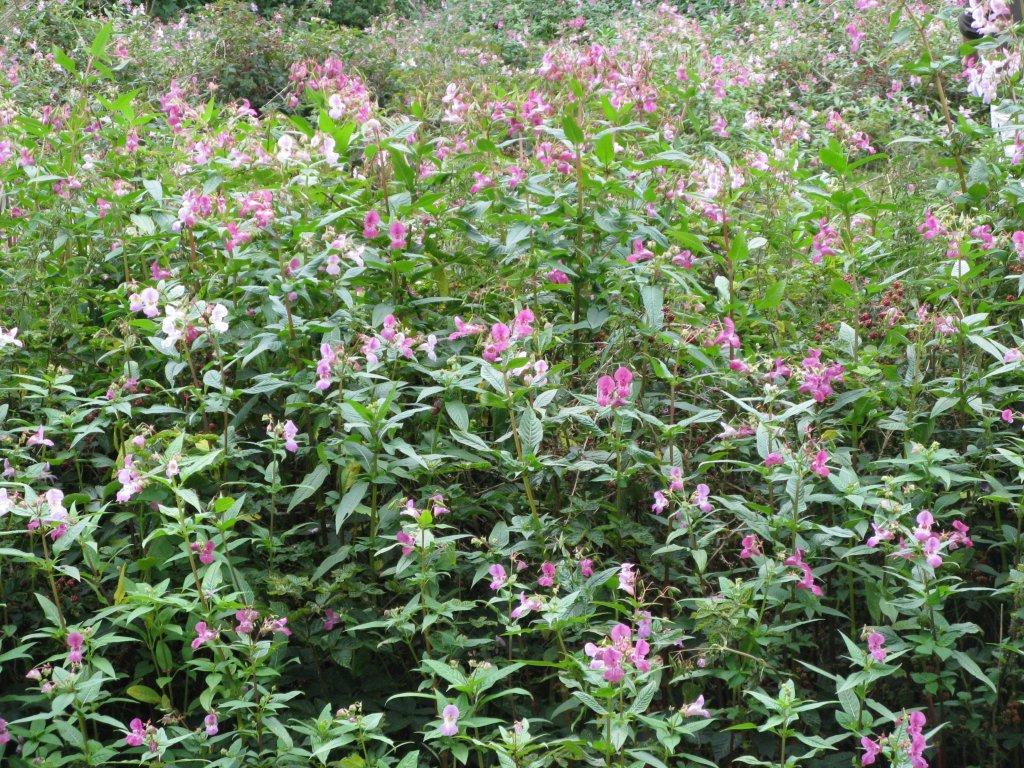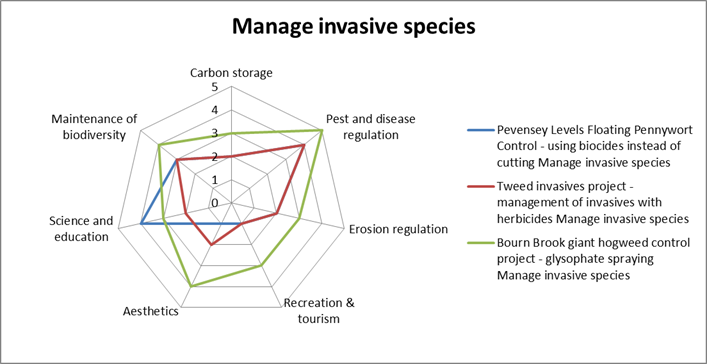 Invasive species are non-native plants or animals that have been introduced either accidentally or deliberately. They often have no natural control mechanisms (e.g. predators), and can cause environmental damage by out-competing native species, degrading habitats and exacerbating flood risk.
Invasive species are non-native plants or animals that have been introduced either accidentally or deliberately. They often have no natural control mechanisms (e.g. predators), and can cause environmental damage by out-competing native species, degrading habitats and exacerbating flood risk.
There are a wide range of non-native invasive species in the UK, including:
- Giant hogweed (Heracleum mantegazzianum) - A large invasive plant with poisonous sap, which grows in dense stands and outcompetes native plants
- Himalayan balsam (Impatiens glandulifera) - A plant which forms dense stands on river banks, outcompeting native plants and leaving banks exposed to erosion when it dies back in the winter
- Floating pennywort (Hydrocotyle ranunculoides) - A floating plant which shades the surface of watercourses, damaging habitats for other plants and aquatic organisms
- Signal crayfish (Pacifastacus leniusculus) - A crustacean which is larger than the native white clawed crayfish, outcompeting them for habitat. The crayfish also prey on salmonid eggs and destabilises river banks by burrowing into them
This measure aims to minimise the damage caused by non-native invasive species by ensuring they are controlled effectively so natural plant and animal communities are allowed to re-establish.
Techniques
A range of techniques can be used to implement this activity including:
- Physical control measures - e.g. cutting or trapping, complete removal and appropriate disposal
- Chemical control measures - through the application of suitable herbicides
- Prevention of spreading - through appropriate site management and cleaning of maintenance equipment
Benefits
The control of non-native invasive species can deliver a range of benefits, including:
- Direct benefits to biodiversity by allowing native species to recolonise an area
- Reduction of erosion potential by reinstating natural vegetation cover and preventing excessive undermining by burrowing organisms
- Benefits for fish populations and commercial fisheries through removal of predators
- Improvements for navigation through removal of water-surface vegetation
- Public health improvements through removal of potentially toxic species
- Pest and disease regulation
- Reduction in flood risk
Case Study Benefits
This diagram displays a comparison of benefits scores (using a high-level ecosystem service assessment methodology) associated with the techniques used in each case study. More details on the methodology can be found here.